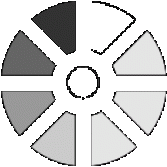Russian Education System - An Overview
Russia or the Russian Federation is a federal, semi-presidential republic which includes 83 constituent entities as established under the Federation Treaty. Russia, situated in northern Eurasia, is the largest country in the world by area and is also the ninth most populous nation. Given its vast size, the country has nine different time zones. The Russian Federation came into being in the year 1991 after the dissolution of the Soviet Union.
Literacy Data and Education Spending
Russia has the one of the highest college educated work force in the world with 54% of the Russian labour force having attained tertiary (college) education. Of the rest, 47.7% have completed secondary education, 26.5% middle school and 8.1% elementary education. According to the 2002 census, the literacy rate in Russia is a high 99.4%. As of 2009, government spending on education was 5.5% of the GDP, which is a substantial increase over the 2004 figure of 3.6% of GDP.
Russia has a long-established tradition in high-quality education for all citizens. Basic education is provided predominantly by the state and lasts for nine years. It is regulated by the Ministry of Education and Science. Wide number of state schools ensures that basic education is available for all. Compulsory education in Russia begins the year the child turns five or, sometimes, six. Pre-School education is provided to children from 1 to 6 years old. Institutional pre-school education is not compulsory and is provided upon parents' request.starts from ages 5-6. Parents can put children into pre- primary schools and kindergartens but it is not compulsory.
The General Education hierarchy followed in Russia is as follows:- Pre-School
- General School
- Primary General School
- Basic General Secondary School
- Secondary General Education/ Upper Secondary School
- Vocational/ Non University Level
- Higher Education
Education usually begins with Pre-School before the age of six, while it is not compulsory. The next step is Primary School, which is part of the general education programme. A child enrolls into a Primary School at the age of six and the education usually lasts for four years. Basic general schooling begins when a child turns ten and it lasts for five years. Then the upper secondary education comes which lasts for two years. Graduates of this level may enter a vocational school or non-university level higher education institutions. Higher education is imparted by state owned as well as private higher education institutions.
Number of Schools and Higher Education Institutes
There are approximately 721 state owned and 369 non-state higher education institutions in Russia. The Federal Agency for Education caters to 338 state owned higher education institutions. The rest of them are supported by other ministries or local authorities. As of 2008, there were 59,260 general education schools in Russia.
State Education Standard: A State Educational Standard lays down requirements of minimum content and workload for students. It also stipulates compulsory fields of study. Local authorities and schools have the right to set up good proportion of the curriculum for their students. Usually each school designs its own syllabus according to the State Education Standard.
Russia lays a huge emphasis on education in the country. In order to guarantee the quality of education, a nationwide mechanism for quality control and assessment is also put to task.
For latest updates see official website of The Ministry of Education of The Russian Federation i.e. https://edu.gov.ru/en
 Processing...
Processing...
 Processing...
Processing...